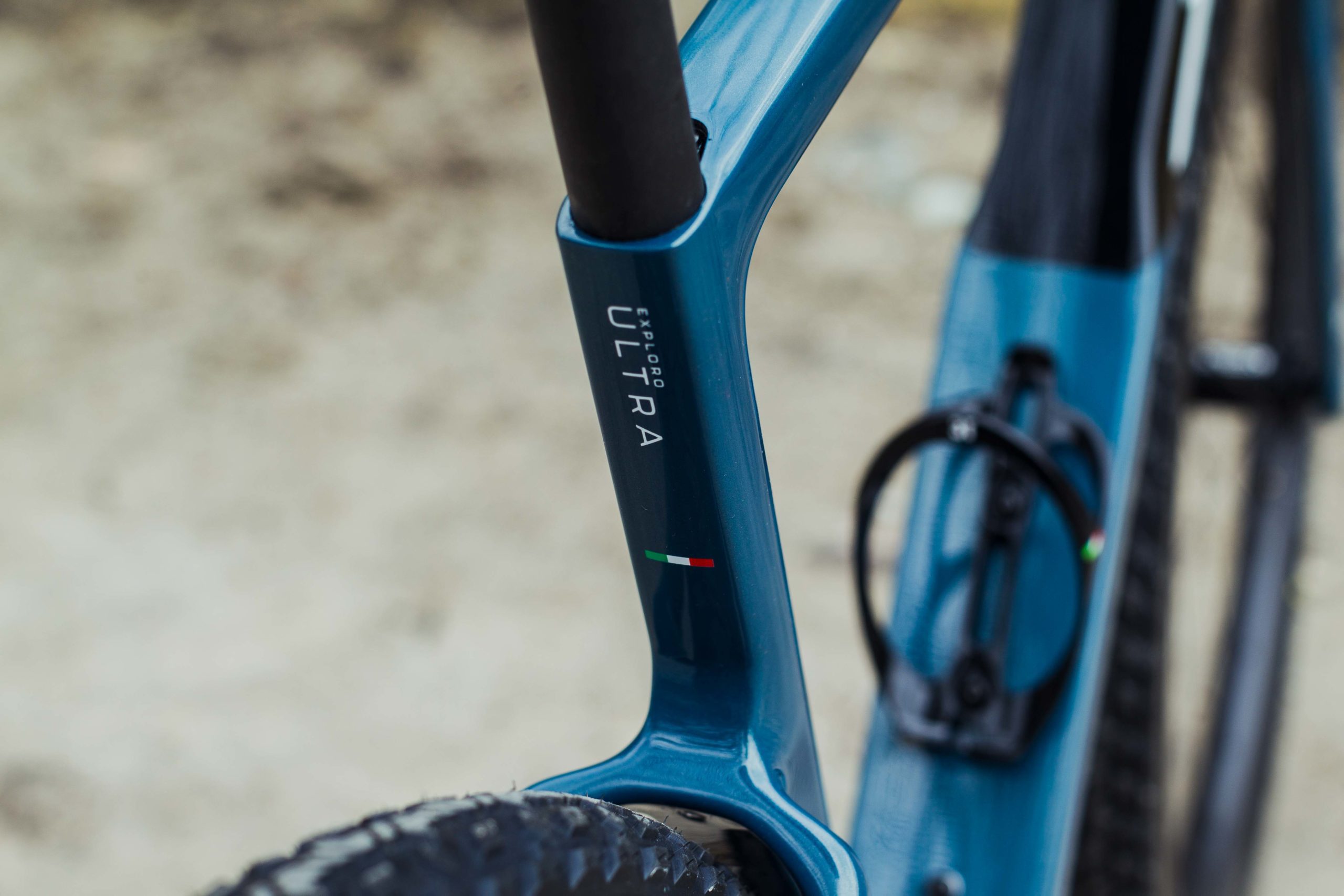3T Exploro Ultra: First look and ride impressions of the gravel bike optimized for wide tires
The aero racer for rough roads sports a beefy down tube and round seatpost
 Photo by:
Matt Stetson
Photo by:
Matt Stetson
3T has released a new bike within its Exploro lineup. The 3T Exploro Ultra brings aerodynamic tube shapes to riders who want to run the widest of gravel tires. It’s made to go over the roughest terrain as quickly and efficiently as possible. The appearance of Exploro Ultra also shows just how much gravel has grown and changed since the release of 3T’s first aero gravel bike, the original Exploro, in 2016.
Features of the 3T Exploro Ultra frame
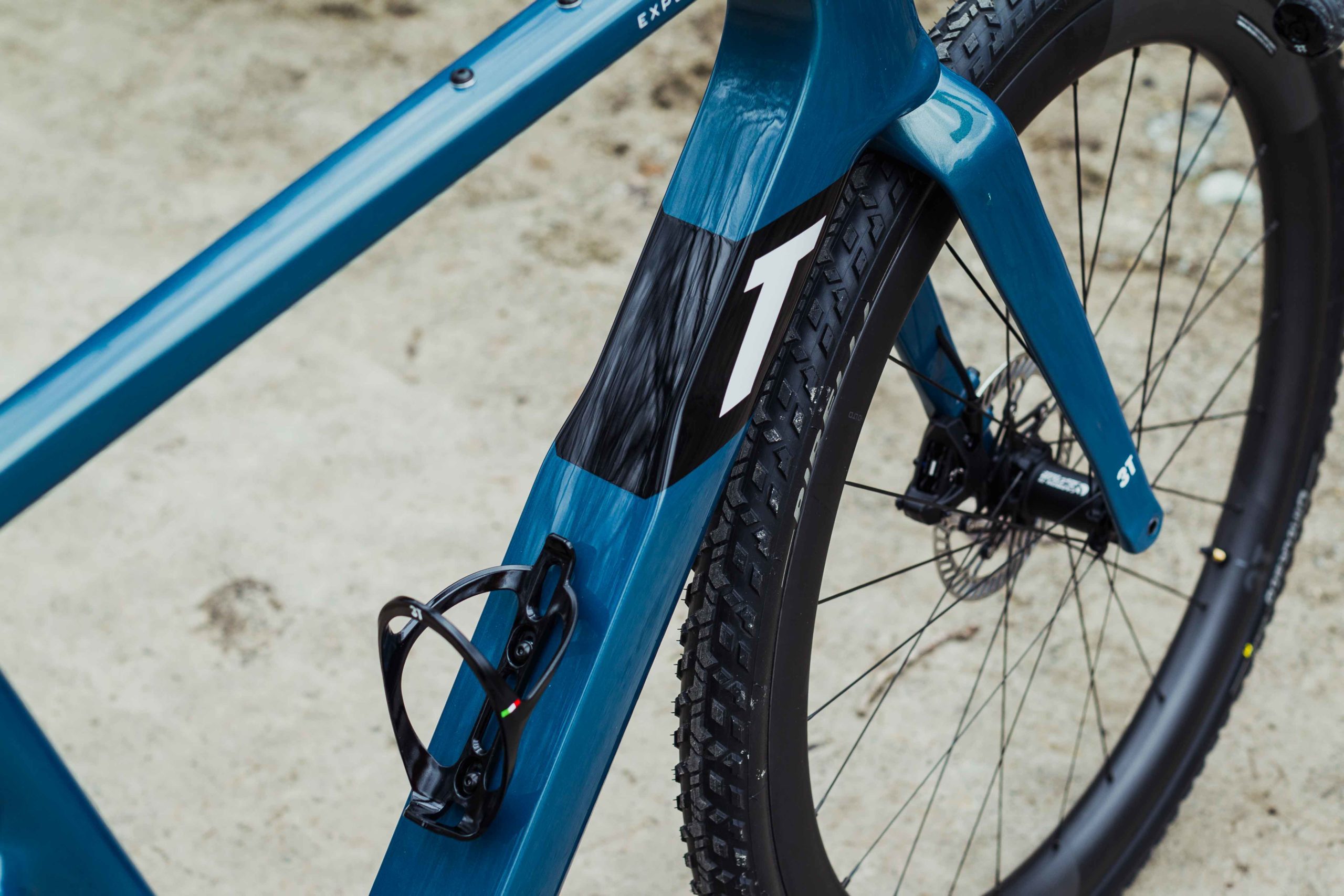
The Ultra frame is optimized for tires in the 55 to 61 mm range on 650b wheels. (If you speak mountain bike, you know 61 mm as 2.4” and 650b as 27.5”.) The legs of the fork are oriented in a way that not only accommodates big rubber, but also begins the process of cutting through the wind. Behind the front wheel is a really beefy down tube designed to keep the airflow off of a wide tire quite smooth. The down tube is 58-mm wide at the head tube. It maintains this width for about 20 cm before it widens to 75 mm. The boost in width keeps things aero around the water bottle. The seat tube, with its truncated-airfoil-like shape and rear-wheel cut-out, also increases the frame’s aerodynamics.
The seatpost is round, not aero, with a 27.2-mm diameter. You’ll have no problem outfitting the Ultra with a dropper post.
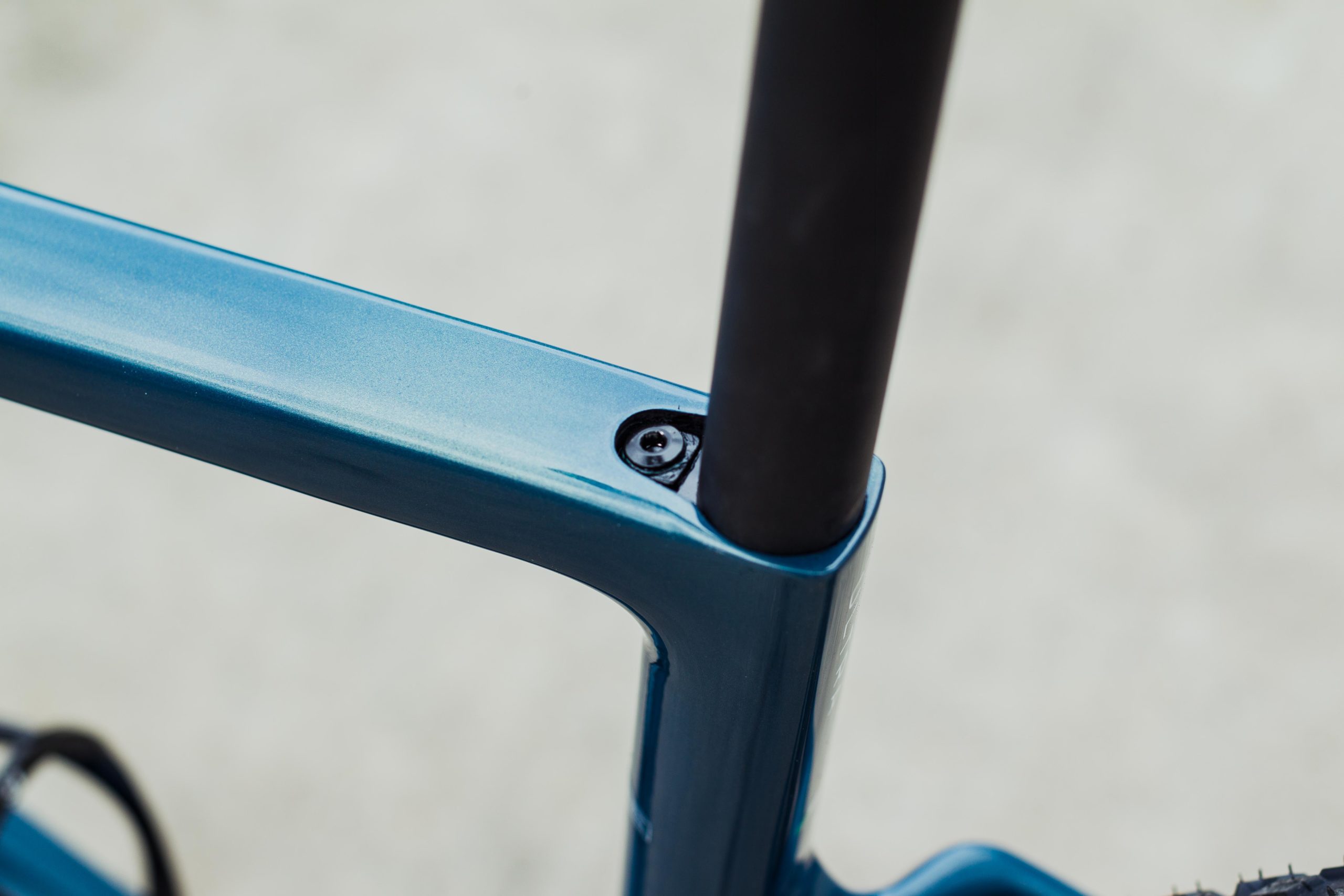
How the 3T Exploro Ultra compares with the 3T Exploro RaceMax
When 3T launched the Exploro RaceMax in 2020, the company produced a frame that could handle 61-mm-wide tires. So why launch the Ultra, if it can run the same size treads? Well, just because the RaceMax can fit 61-mm tires, doesn’t mean its tubes are aerodynamically optimized for the big rubber. The RaceMax is at its best running 35- to 40-mm-wide tires. Remember, the RaceMax’s down tube starts out at 46-mm wide before it gets to 75 mm.
The fork length of the Ultra is about 4 mm longer for the big tires. Its wheelbase is also a little bit longer than that of the RaceMax, making the new frame a little more relaxed in its handling and a bit more stable.
The head tube on the Ultra isn’t as narrow as the head tube on the RaceMax. As a result, the Ultra is not running the narrow Minmax headset bearing to accommodate the 1 1/8″ to 1 1/2″ steering tube. Instead, it uses a more conventional bearing.

Tires: So many choices, so choose wisely
Remember WAM? That’s a term coined by 3T. It’s an initialism for “width as measured.” It’s the actual width of a tire once it’s fitted to a rim, as opposed to its nominal width printed on its sidewall. 3T introduced the term so that when it says its frame can handle a 61-mm-wide tire, it means, really, actually, there’s space for 61-mm. The following widths are therefore the widths as measured.
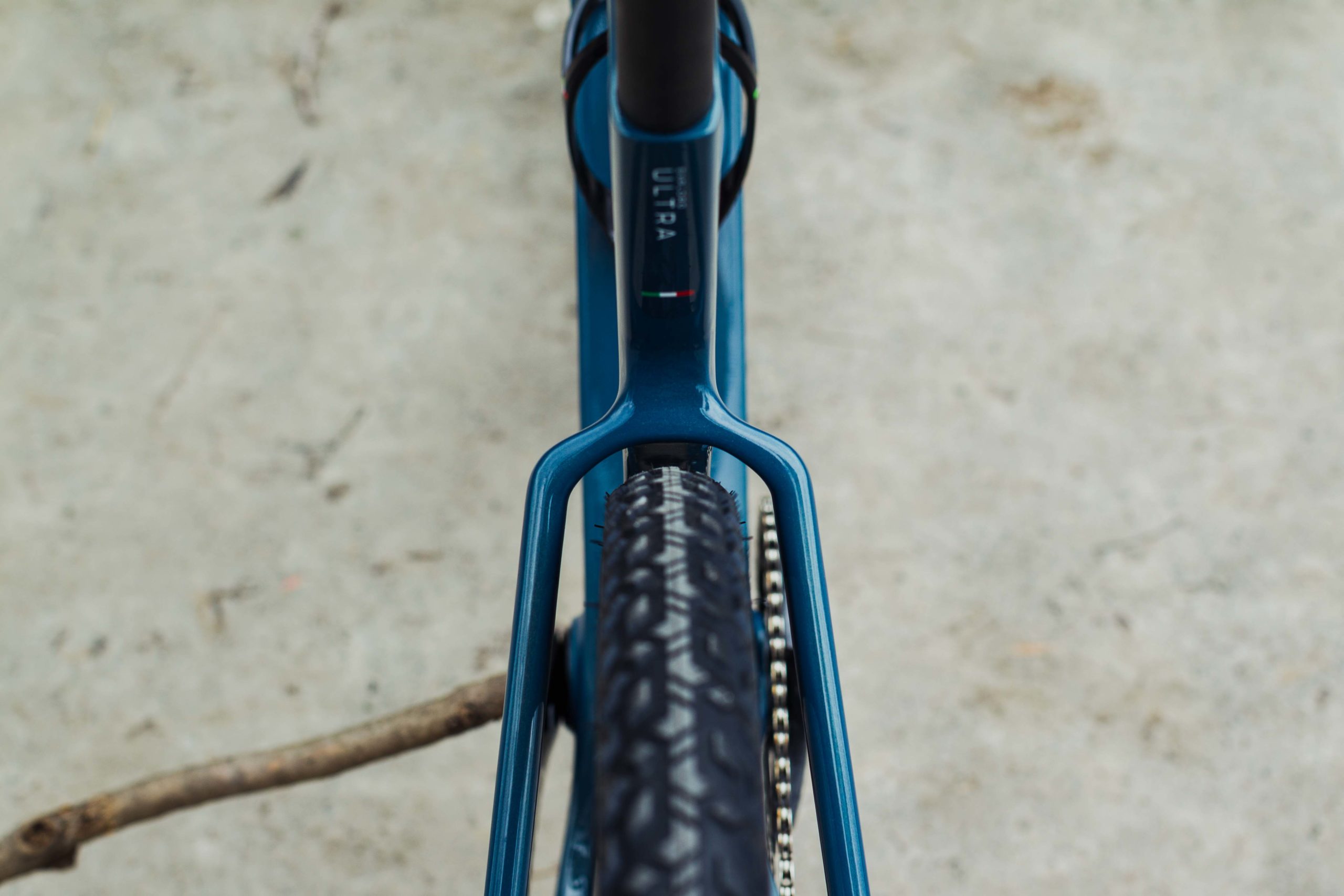
While the frame and fork of the Ultra has space for a 61-mm x 650b or a 45-mm x 700c tire and anything narrower, that doesn’t mean you should throw on 28-mm tread if you have a lot of asphalt to cover. Not only do 28-mm tires look strange with so much distance between them and the fork legs or the seatstays, but they’ll affect the handling of the bike. The frame’s head-tube angle and fork rake were set to work best with the wide tires. As Gerard Vroomen, the Ultra’s designer, says, “It feels pretty weird with 28 mm tires.” If you want to run slicks, keep them in the 35- to 40-mm range.
Also note, your drivetrain can affect the amount of space you have for a rear tire. If you have a 1-by setup, you have the maximum tire clearance. At 2-by, you don’t. For 2-by mechanical Shimano GRX, you can do 45-mm x 700c and 53-mm x 650b. For Di2 GRX, there’s space for 40-mm x 700c and 53-mm x 650b. For a 2-by SRAM AXS, your clearance figures are 40-mm x 700c and 45-mm x 650b. 3T is definitely in favour of a single-chainring setup.
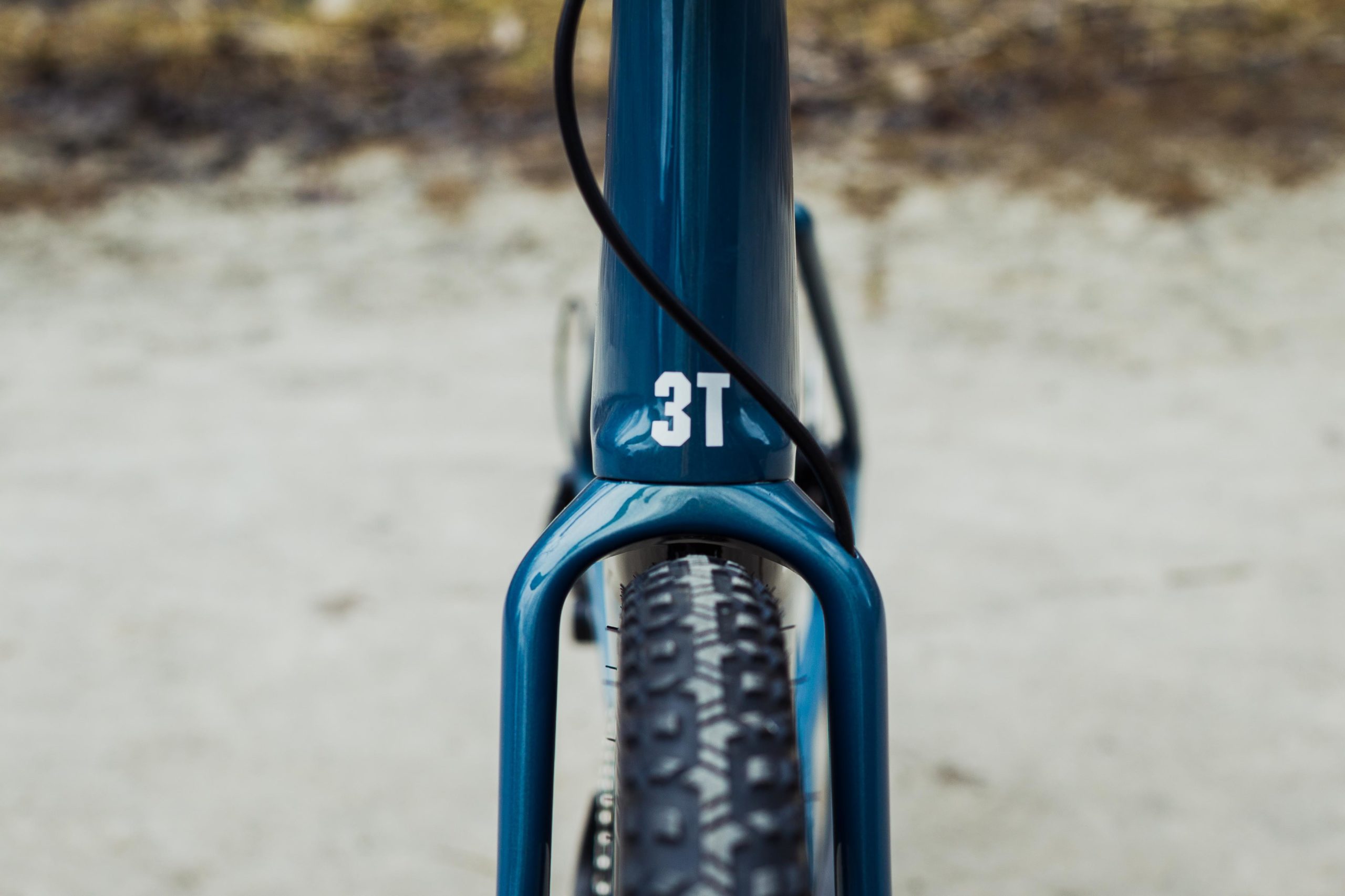
Where 3T Exploro Ultra fits within the evolution of gravel bikes (according to its creator)
“When the first Exploro came out, there wasn’t really such a thing as performance gravel,” Vroomen says. “Gravel was much more about going riding somewhere far off for three months with 50 lb. of luggage.” Still, more riders wanted to take on gravel races. The start lines at big events began seeing more and more competitors who wanted features that would allow them to ride faster.
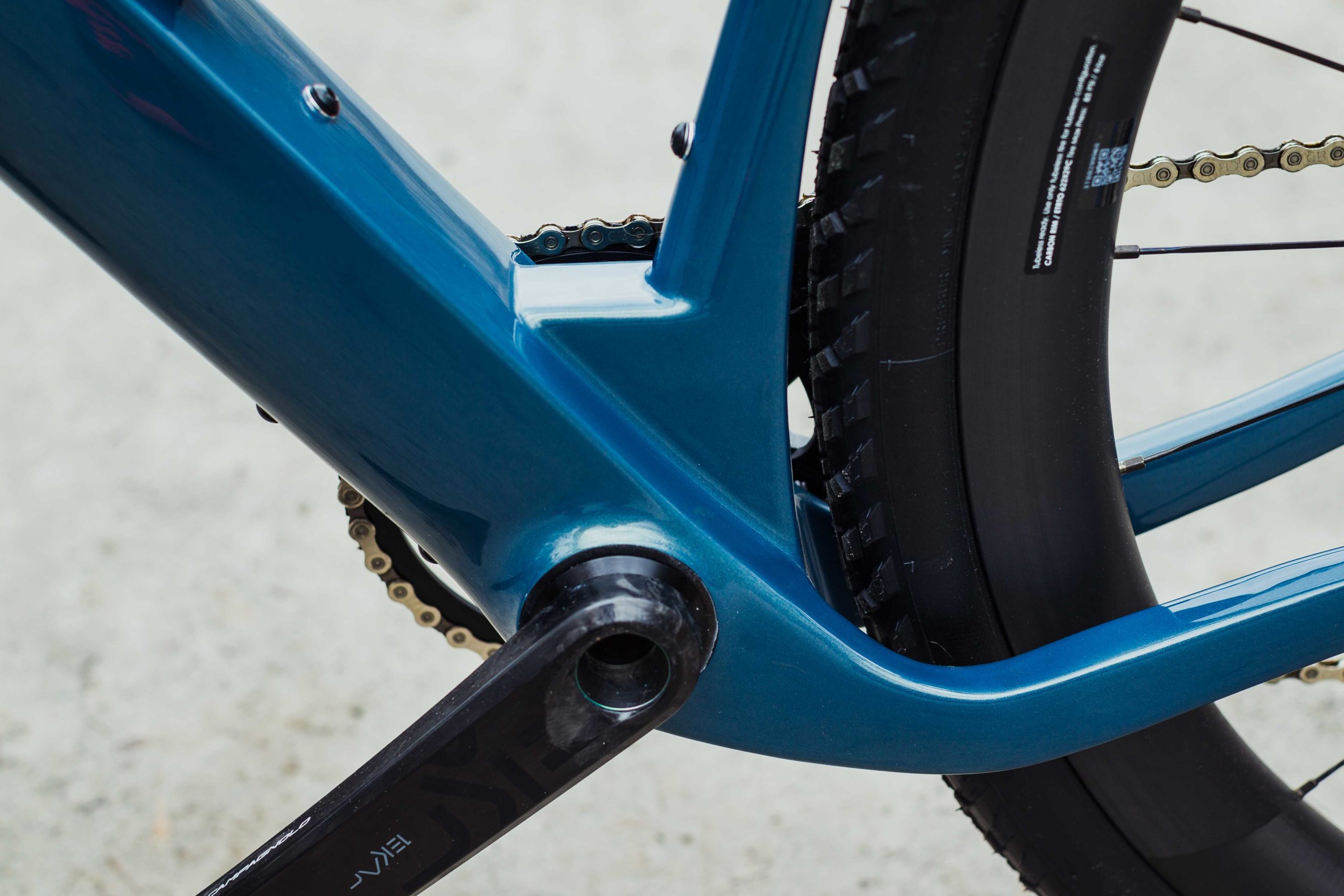
Vroomen, with fellow Cervélo co-founder Phil White, had already done a lot of work making road bikes more aerodynamic. Vroomen left Cervélo in 2012. In 2015, he and René Wiertz acquired 3T. To Vroomen, making an aero gravel bike at 3T simply made sense. “It’s just physics,” he says. “If you want the speed of a road bike and big tires to take care of the terrain, those tires might lose you 1 km/h on good roads. So, you can’t say aerodynamics don’t matter. Also, we were targeting the gravel racer who was emerging at that time. In the Midwest, if you’re going into a 60 km/h headwind, the aerodynamics are super important.”
Of the original Exploro, Vroomen says it was just so much better at going fast over rough terrain than anything else at the time. Then, other bikes started appearing that could compete with the Exploro. There was also a demand to match the growing number of gravel bikes. “When there’s only one bike, of course, it’s the best for everything,” Vroomen says. “As you get more and more bikes into that segment, and more and more people into that segment, it becomes the case that one bike isn’t the best for everything. Now you can start to be more specific. Now you can make a bike for easy to medium gravel. You can make a bike for medium to really tough gravel.”
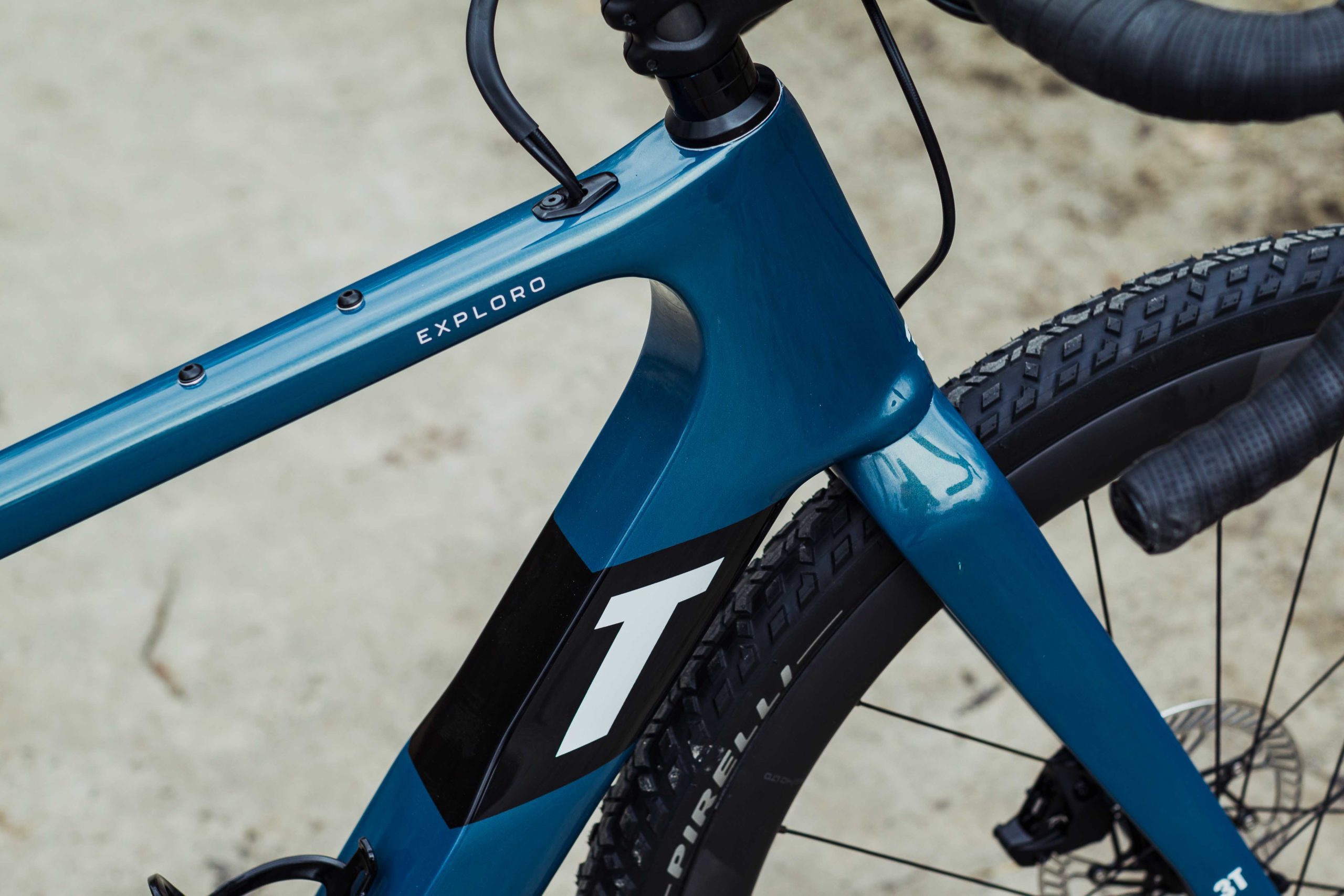
The Ultra is 3T’s bike for really tough gravel. It can run treads for the highest amount of traction and control. Yet, the bike still has the speed for covering a lot of that rough terrain quickly.
So where will gravel bikes go from here? Vroomen doesn’t really give specifics, but he has a sense of the overall trend. “When something is new, all the bikes look very different,” he says. “Ten years later, the bikes start to look alike a lot more, whether it’s aero road bikes or full-suspension mountain bikes. You have the same trends until someone throws a stone into the pond and everything scatters again.”
Canadian prices for 2022 3T Exploro Ultra models
| Build | Features | Canadian Price |
|---|---|---|
| Campagnolo Ekar | 13-speed, 9-42 tooth cassette, 650b Fulcrum Rapid Red 900 wheels, 27.5 x 2.1 Vittoria Barzo tires | $6,999 |
| Campagnolo Ekar | 13-speed, 9-42 tooth cassette, 700c Fulcrum Rapid Red 900 wheels, Pirelli Cinturato gravel M tires | $6,999 |
| SRAM Force/Eagle AXS | 12-speed, 11-50 tooth Eagle cassette, 650b Fulcrum Rapid Red 900 wheels, 27.5 x 2.1 Vittoria Barzo tires | $7,699 |
| SRAM Force/Eagle AXS | Crank Brothers Highline dropper seatpost, 12-speed, 11-50 tooth Eagle cassette, T Discus i28 LTD wheels, 27.5 x 2.1 Vittoria Barzo tires | $10,399 |
| Frameset | frame, fork and small parts | $3,799 |
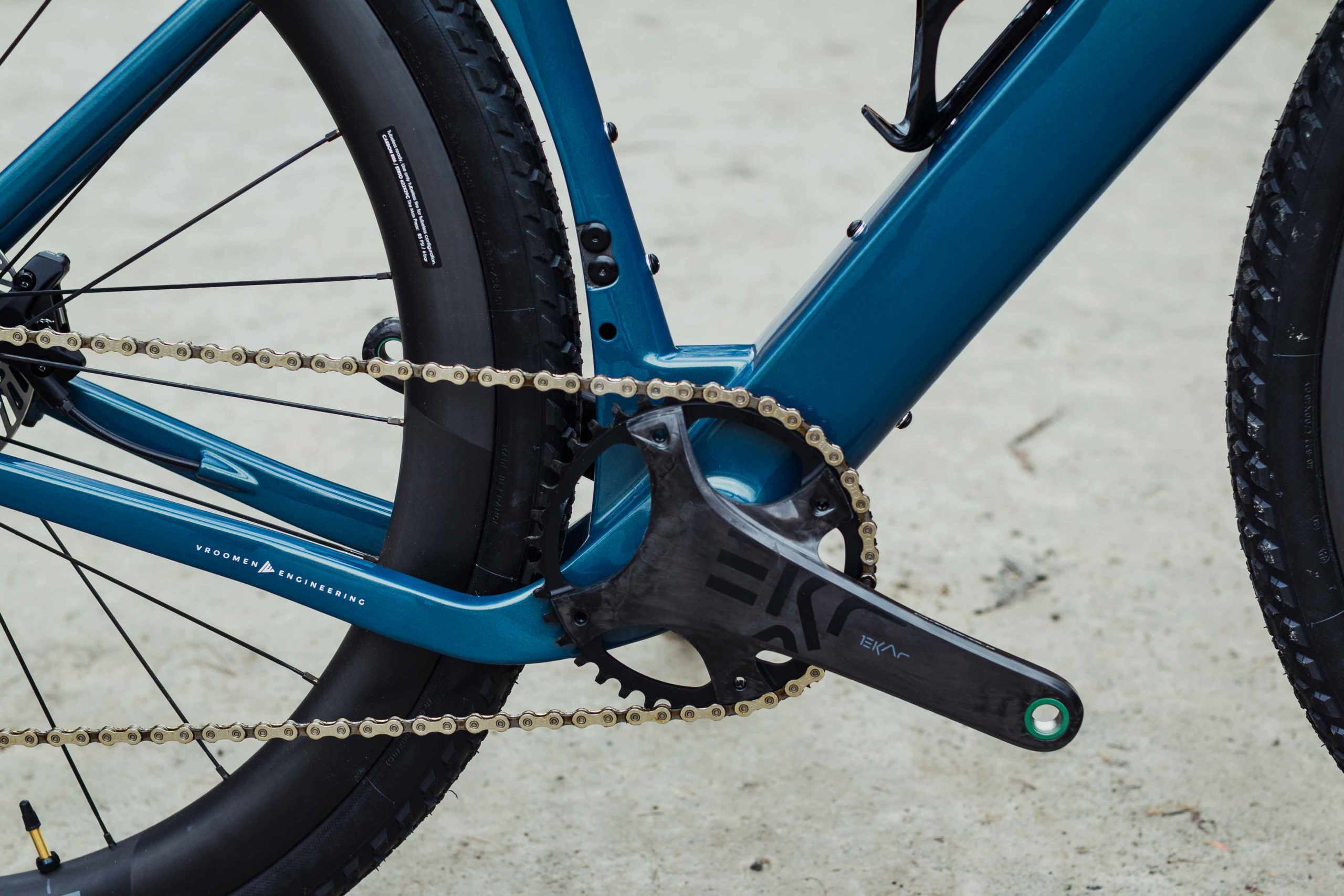
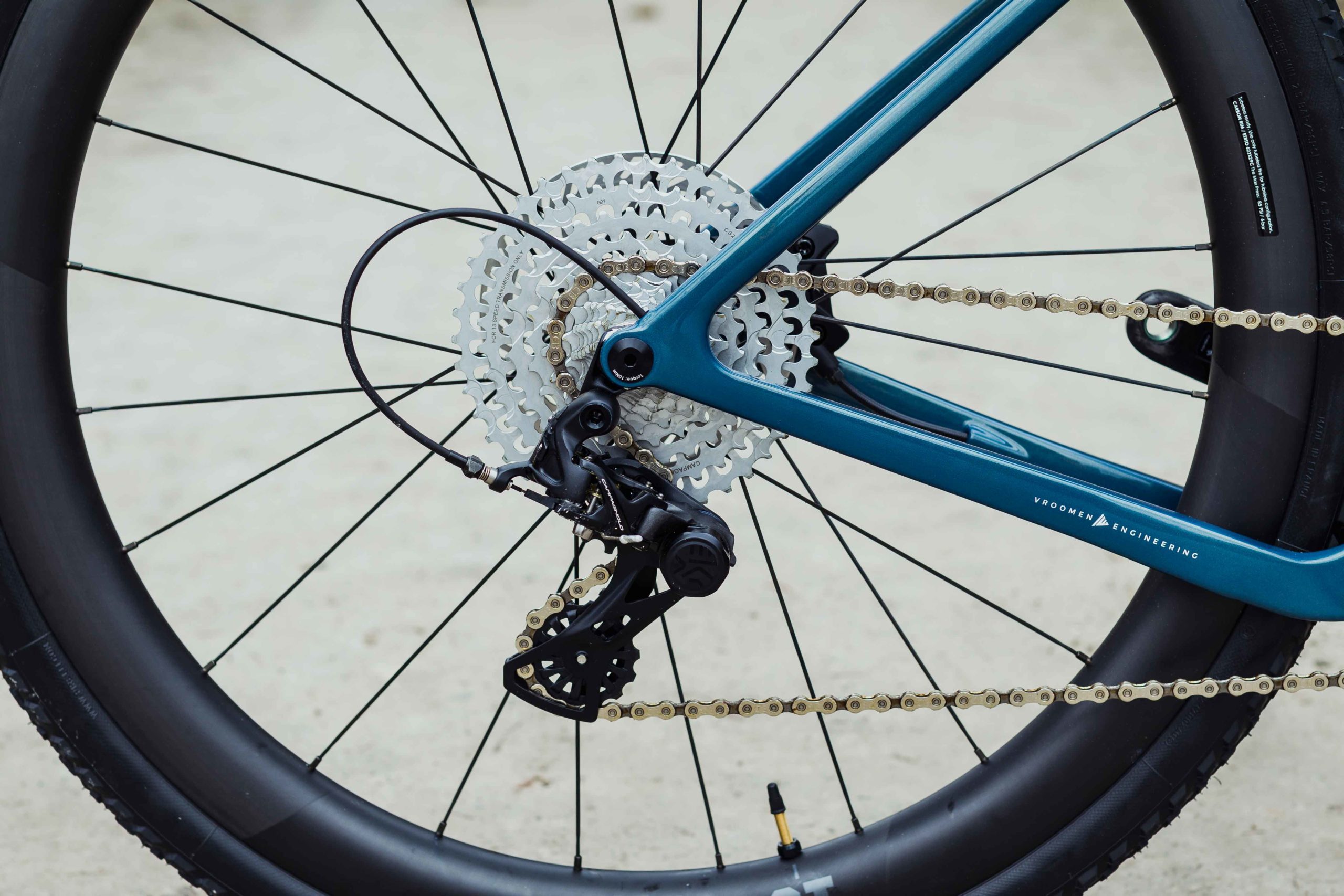
3T Exploro Ultra first ride impressions
The Exploro Ultra I’m testing doesn’t have the standard specs offered by 3T. The Campagnolo Ekar models come with Fulcrum Rapid Red 900 wheels, either in 700c or 650b. My tester, however, is running 3T’s Discus 45 | 40 hoops in 700c. They plump out the 40-mm Pirelli Cinturato Gravel M tires to about 45-mm wide. The whole setup tips my scale to 8.54 kg.
This size-54 Ultra has a wheelbase of 1,012 mm, which is 4 mm longer than the RaceMax I’m familiar with. While Vroomen says the increase in length will add a bit more stability and slow the steering a bit, I have had a hard time detecting the difference, at least on my few initial runs. The rake and trail is nicely dialed on the Ultra so even with the massive rubber, the bike feels pretty lively. To be clear, 45-mm wide tires don’t feel like 25-mm all of a sudden. There’s still their weight that you have to push around. But fast corners on pavement and twisty bits of light singletrack are both fun to take on with the Ultra.

Before I got the Exploro Ultra, I hadn’t spent a lot of time with the Ekar groupset, but I can tell you that it is very Campy. I do like the one-tooth increments on the smallest cogs: 9, 10, 11, 12, 13 and 14. When you are going fast, it’s great to be able to dial in your cadence easily. (I confess though, the 9 and the 10 tooth have been used quite, quite sparingly.) The big cogs—42-tooth at the end—are perfect for taking on short, sharp inclines. The shift action is always solid. I do find downshifting from in the drops with lobster-claw mitts requires more muscle than other gruppos. Does that say more about Ekar or me? I’m going with Ekar in this case. Shifting from the hoods is smooth.
I’ve bashed around in some soupy mud with the Ultra, finding the limit of the tires’ traction. But the real slogs you want to avoid with a gravel bike are the ones on pavement that connect the dirt. Even with the burly tires, the pavement parts I’ve faced haven’t been such a drag. The most fun that I’ve had on the Ultra, to date, is on some trails still frozen early one morning. They were actually a new discovery for me. Armed with the Ultra, I crunched over leaves that have been languishing since last fall and stayed on top of dirt that would become soggy a few hours later.
Soon, I’ll take the Ultra to Paris to Ancaster, southern Ontario’s big gravel event. Really, the RaceMax is probably the better bike for that race, but I know the Ultra will be no slouch. I will probably be slowing the bike down.

